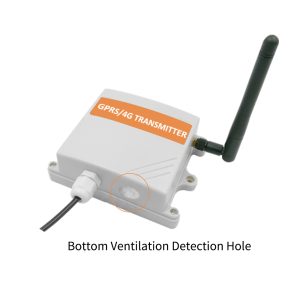-
How Gas Sensors are Revolutionizing Indoor Air Quality Monitoring
- Indoor air quality (IAQ) has a significant impact on our health, comfort, and overall well-being. Poor IAQ can lead to a range of health issues, including respiratory problems, allergies, and even more severe conditions. As a result, ther……
- Chat Online
-
Description
Indoor air quality (IAQ) has a significant impact on our health, comfort, and overall well-being. Poor IAQ can lead to a range of health issues, including respiratory problems, allergies, and even more severe conditions. As a result, there is a growing need for effective indoor air quality monitoring systems. In recent years, gas sensors have emerged as a revolutionary technology that is transforming the way we monitor and improve IAQ. This article explores how gas sensors are revolutionizing indoor air quality monitoring and the benefits they bring.

Understanding Gas Sensors:
Gas sensors are devices designed to detect and measure the presence of specific gases in the surrounding environment. They work by converting the chemical reactions caused by gas molecules into measurable electrical signals. Gas sensors are capable of detecting various gases, such as carbon dioxide (CO2), carbon monoxide (CO), volatile organic compounds (VOCs), and many others. These sensors play a crucial role in accurately assessing air quality and identifying potential contaminants.
Real-Time Monitoring:
One of the significant advantages of gas sensors is their ability to provide real-time monitoring of indoor air quality. Traditional methods often involve manual sampling and laboratory analysis, which can be time-consuming and impractical for continuous monitoring. Gas sensors, on the other hand, offer instant and continuous data collection, allowing for immediate detection and response to changes in air quality. This real-time monitoring enables proactive measures to be taken, such as adjusting ventilation systems or addressing potential pollutant sources promptly.
Early Detection of Hazardous Gases:
Gas sensors help in the early detection of hazardous gases that can pose significant risks to human health. For example, carbon monoxide (CO) is a colorless and odorless gas produced by combustion processes, such as faulty heating systems or gas appliances. High levels of CO can lead to poisoning and even death. Gas sensors can quickly detect the presence of CO, triggering alarms and allowing occupants to evacuate or take necessary precautions. Similarly, gas sensors can detect other harmful gases, such as nitrogen dioxide (NO2) or sulfur dioxide (SO2), providing an early warning system for potential health hazards.
Improved Energy Efficiency:
Gas sensors also contribute to improved energy efficiency in buildings. By continuously monitoring air quality, these sensors can optimize ventilation systems, ensuring that fresh air is supplied when needed, while reducing energy waste by avoiding unnecessary ventilation. This targeted approach based on real-time data can result in significant energy savings without compromising indoor air quality.
Enhanced Occupant Comfort and Productivity:
Good indoor air quality has a direct impact on occupant comfort and productivity. Poor IAQ can lead to symptoms such as headaches, fatigue, and difficulty concentrating, which can significantly affect performance and well-being. Gas sensors enable the identification and mitigation of potential sources of indoor air pollution, ensuring a healthier and more comfortable environment for occupants. By maintaining optimal air quality, gas sensors contribute to improved productivity, reduced absenteeism, and increased overall satisfaction.
Integration with Smart Building Systems:
Gas sensors can be seamlessly integrated into smart building systems, enabling centralized monitoring and control of indoor air quality. These sensors can communicate with building management systems, allowing for automated responses and adjustments based on predefined thresholds or user-defined settings. Integration with other smart devices, such as thermostats or humidity sensors, further enhances the capability to maintain a healthy and comfortable indoor environment.

Conclusion:
Gas sensors are revolutionizing indoor air quality monitoring by providing real-time, accurate, and continuous measurement of key gases. Their ability to detect hazardous gases, enable early warnings, and optimize ventilation systems brings numerous benefits, including improved occupant health, enhanced energy efficiency, and increased productivity. As the demand for healthier indoor environments continues to grow, gas sensors will play a vital role in ensuring optimal indoor air quality and creating healthier living and working spaces for all.
-
Recommend:
-
-
How Gas Sensors are Revolutionizing Indoor Air Quality Monitoring
Indoor air quality (IAQ) has a significant impact on our he…
-
How does the gas detector detect gas?
Gas detectors are essential tools in various industries and…
-
What is the difference between gas detectors?
Gas detectors are essential devices used to detect the pres…
-
Gas sensors are essential tools used in various industries …
-
 : +86 155 8830 2704
: +86 155 8830 2704 : jxdziot@gmail.com
: jxdziot@gmail.com
